5 Homemade Scrubs to Exfoliate Dead Skin Cells Safely
Introduction
- One of the most important parts of any skincare regimen is exfoliation. Every 28 to 40 days, our skin normally sheds dead cells, but occasionally this process slows down because of factors like age, pollution, lifestyle choices, or poor skincare routines.
- Homemade Exfoliating Scrubs Dead cells that build up on the skin’s surface can give it an uneven, harsh, and lifeless appearance.
- Additionally, they can clog pores, resulting in acne, whiteheads, and blackheads. By gently removing these dead cells and unclogging pores, exfoliation helps to expose the healthier, younger skin beneath.
- Brighter tone, smoother texture, and improved moisturizer and serum absorption are the outcomes.
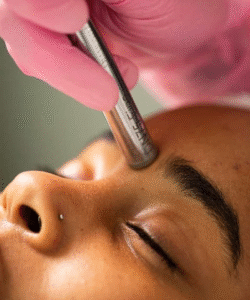
- Why Choose Natural Exfoliation?
- Although there are several chemical-based scrubs and exfoliators available on the market, not all of them are appropriate for daily or sensitive use.
- Many of them include abrasive particles, artificial perfumes, and skin-irritating preservatives. Natural DIY scrubs, on the other hand, are affordable, gentle, and personalized. Nutrient-dense, antioxidant-rich, and moisturizing ingredients include sugar, coffee, oats, honey, and yogurt.
- These protect the skin from needless chemicals while also nourishing and healing it in addition to exfoliating it.
- Exfoliation is frequently suggested by dermatologists as a crucial step in maintaining healthy skin.
- But they also emphasize how crucial it is to pick the appropriate approach.
- Excessive exfoliation using harsh scrubs or strong chemical peels can weaken the skin’s defenses, resulting in redness, irritation, or even tiny tears.
- People have been using natural skin care products for generations.
- Ingredients including milk, turmeric, rose water, and rice flour were used for exfoliation in ancient Indian, Egyptian, and Greek beauty practices.
- These age-old methods demonstrate that skincare doesn’t always call for pricey products—sometimes the greatest answers can be found just in your kitchen.
- DIY scrubs are still popular today because they give you complete control over the ingredients, texture, and scent, making them very individualized.
- Exfoliation contributes to the general health of the skin and is not only for aesthetic purposes.
- Eliminating accumulation promotes blood circulation and cell turnover, which gives the skin a natural glow.
- Additionally, exfoliated skin makes it possible for oils and serums to penetrate deeper, increasing their efficacy.
- Using natural, fresh, and clean materials is crucial when making your own scrubs. Before using a new mixture on your face or body, always test it on a small patch of skin.
- Avoid overscrubbing; depending on your skin type, two to three times a week is typically plenty.
- Transparency also fosters trust because, in contrast to many commercial solutions with lengthy lists of chemical compounds, every ingredient used in do-it-yourself scrubs is safe and identifiable.
- This gives consumers peace of mind that the products they are using are safe, efficient, and genuinely skin-friendly.
1. Oatmeal & Honey Scrub
- Why It Works
- Oatmeal and honey are two of the most reliable ingredients in natural skincare products. Oatmeal is a mild yet powerful exfoliator because of its calming and anti-inflammatory qualities.
- It has substances called saponins that, without depriving the skin of necessary moisture, function as natural cleansers by eliminating debris, oil, and dead skin cells.
- Even the most sensitive skin types can benefit from ground oatmeal’s fine texture, which polishes the skin without irritating or creating microtears.
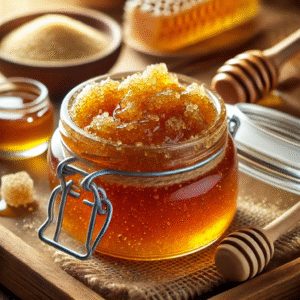
- Conversely, honey is a naturally occurring humectant. In other words, it keeps the skin hydrated and soft by attracting moisture from the surroundings.
- Furthermore, honey has potent antioxidant and antimicrobial qualities.
- These characteristics support skin healing and guard against free radical damage, which can hasten aging, in addition to reducing acne and outbreaks.
- Honey restores moisture and protects against bacteria, while oatmeal gently exfoliates. Together, these two ingredients have a synergistic effect.
- From a professional standpoint, physicians frequently suggest oatmeal baths to relieve eczema, dryness, or sunburn, emphasizing their efficacy and safety.
- As a skin-friendly substance, honey has also been extensively researched in dermatology for its ability to hydrate and cure wounds.
- How to Make the Scrub
- It’s easy, inexpensive, and only requires two readily available items to make your own oatmeal and honey scrub at home. Here is a detailed guide:
- To make the oatmeal, take two tablespoons of plain oats and use a food processor or blender to ground them into a fine powder. This guarantees a silky, skin-friendly texture.
- Mix with Honey: Toss the ground oats with 1 tablespoon of organic, raw honey. Stir until the mixture takes on the consistency of paste. You can change the texture of the mixture by adding a few drops of plain water or rose water if it seems too thick.
- Application: Use light circular motions to apply the scrub to damp, freshly washed skin. Pay attention to regions like the cheeks, forehead, or chin that are prone to dryness or roughness. Steer clear of vigorous cleaning to avoid irritating the skin.
- Rinse and Massage: To improve exfoliation and increase blood circulation, massage the scrub for two to three minutes. Use a fresh towel to pat dry after rinsing with lukewarm water.
- Depending on the type of skin you have, you can use this scrub two or three times per week. Once a week is plenty for sensitive skin.
- Benefits You Can Expect
- Without using strong abrasives, gentle exfoliation eliminates dead cells.
- Hydration Boost: Honey makes the skin plump by retaining moisture.
- Prevention of Acne: Honey’s antimicrobial properties help lessen outbreaks.
- Calming Effect: Redness, itching, and irritation are all reduced by oatmeal.
- Better Texture: Skin that is regularly used is smoother and more vibrant.
- Trust & Safety Tips
- Emphasizing safe use is crucial for establishing trust in natural skincare products.
- Before using the scrub all over your face, always do a patch test, especially if you have any allergies.
- To optimize its natural enzymes and nutrients, use raw honey rather than processed honey. To prevent roughness, make sure the oats are ground finely.
- This DIY solution is safe and dependable since it eliminates exposure to dangerous chemicals typically found in commercial scrubs by keeping the recipe straightforward and ingredient-focused.
2. Coffee & Coconut Oil Scrub
- Why It Works
- Coffee is a potent element for skincare in addition to being your morning energy boost.
- Coffee, which is high in antioxidants, aids in the battle against free radicals, which cause dullness, uneven skin tone, and premature aging.
- Coffee powder’s tiny particles work as a natural exfoliator, gently removing dead skin cells and clearing clogged pores. In addition to exfoliating, coffee increases blood flow when used topically, which can improve a natural, healthy glow and momentarily lessen puffiness.
- Due to its capacity to temporarily tighten the skin’s surface and enhance circulation, many people also observe that regular use of coffee scrubs improves the look of cellulite and uneven texture.
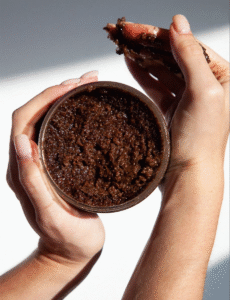
- Why It Works
- Coffee is a potent element for skincare in addition to being your morning energy boost.
- Coffee, which is high in antioxidants, aids in the battle against free radicals, which cause dullness, uneven skin tone, and premature aging.
- Coffee powder’s tiny particles work as a natural exfoliator, gently removing dead skin cells and clearing clogged pores.
- In addition to exfoliating, coffee increases blood flow when used topically, which can improve a natural, healthy glow and momentarily lessen puffiness.
- Due to its capacity to temporarily tighten the skin’s surface and enhance circulation, many people also observe that regular use of coffee scrubs improves the look of cellulite and uneven texture.
- From an expertise perspective, coffee scrubs are often used in spa treatments to rejuvenate dull skin, while coconut oil has long been trusted in Ayurveda and dermatology as a natural emollient for dry, flaky skin. Together, they create a skincare solution that is both effective and safe for most skin types.
- How to Make the Scrub
- With just two basic ingredients, this scrub is easy to make at home. This is how you create and utilize it:
- Gather the Ingredients: 1 tablespoon of coffee powder, ground fine, should be measured. While freshly ground coffee retains more texture and antioxidants, instant coffee might work.
- Add Coconut Oil: Add 1 tablespoon of cold-pressed, organic coconut oil and stir. Because it preserves vital nutrients, this type of coconut oil is the most advantageous.
- Blend thoroughly, stirring until the substance takes on the consistency of a smooth paste. You can preheat the oil a little before mixing if it solidifies in colder climates.
- Application: Massage the scrub onto wet, clean skin. For two to three minutes, massage the mixture with light circular motions, paying particular attention to dry patches, knees, and elbows.
- Rinse and moisturize: Use lukewarm water to wash and pat dry. Because of the moisturizing properties of coconut oil, your skin will feel softer right away, and you might not even need to use extra moisturizer afterwards.
- You can use this scrub once or twice a week. Coffee granules can be a little harsh if used too often, therefore it’s best to prevent overuse.
- Benefits You Can Expect
- Brightening Effect: The antioxidants in coffee fight dullness and make the skin look more vibrant.
- Deep Moisture: Coconut oil maintains the skin’s hydration and softness.
- Better Circulation: A light massage combined with coffee promotes blood flow, which results in a radiant appearance.
- Smooth Texture: Rough areas are softer and dead skin is eliminated.
- Support for Anti-Aging: Coffee’s antioxidants reduce fine wrinkles and guard against early aging.
- Trust & Safety Tips
- Even though this scrub is natural, it’s crucial to use it properly. Always do a patch test, particularly if your skin is sensitive or prone to acne.
- To prevent skin irritation, grind coffee granules finely. Because coconut oil can occasionally block pores, it might not be suitable for oily or acne-prone skin.
- If necessary, use lighter oils like jojoba or almond oil. For optimal safety and benefit, always make sure the ingredients are organic and pure.
3. Sugar & Olive Oil Scrub
- Why It Works
- One of the most traditional and efficient do-it-yourself exfoliants is the scrub made with sugar and olive oil.
- Homemade Exfoliating Scrubs As a natural physical exfoliator, sugar crystals help remove dead skin cells that give the appearance of weary, rough, and lifeless skin.
- When applied correctly, sugar granules dissolve gradually as you massage them into damp skin, making the procedure safe and soothing in contrast to other abrasive scrubs.
- Additionally, sugar contains glycolic acid, a naturally occurring form of alpha hydroxy acid (AHA) that revitalizes the skin’s surface and encourages cell turnover.

- In the skincare industry, olive oil is frequently referred to as “liquid gold” since it provides potent hydration and nourishment.
- Olive oil, which is high in antioxidants, vitamins E and K, and vital fatty acids, aids in repairing the skin’s protective layer and retaining moisture.
- In addition to softening rough areas, it guards against damage from free radicals, which causes premature aging.
- Olive oil and sugar work together to balance the scrub by keeping your skin from becoming dry and irritated, leaving it feeling both profoundly nourished and polished.
- Sugar scrubs are frequently suggested by dermatologists for rough spots like elbows, knees, and heels, while olive oil has been used for ages in Mediterranean skincare practices due to its anti-aging and therapeutic qualities. They work together to create a straightforward yet effective exfoliation pair.
- How to Make the Scrub
- The materials are frequently already in the kitchen, and making this scrub at home only takes a few minutes. Here’s how to get ready and make good use of it:
- Take two teaspoons of fine sugar to measure the ingredients. White sugar can also be used for a slightly stronger exfoliation, but brown sugar is the mildest choice.
- 1 tablespoon of extra virgin olive oil should be added and mixed in. This kind of olive oil preserves the most nutrients and undergoes the least amount of processing.
- Blend well, stirring until the olive oil coats the sugar evenly. The resulting paste should be spreadable but gritty.
- Application: For two to three minutes, gently massage the scrub in circular circles over clean, moist skin. Don’t be too harsh; instead, concentrate on regions that are dry or rough.
- Wash off with lukewarm water to rinse and moisturize. Your skin will have a natural glow and feel soft and smooth. You might only need a mild moisturizer after using olive oil because it is already moisturizing.
- Depending on your skin type, you can use this scrub up to three times for the body and once or twice for the face each week.
- Benefits You Can Expect
- Effective Exfoliation: Sugar grains brighten the complexion, unclog pores, and remove dead skin cells.
- Deep Hydration: Olive oil improves skin elasticity and restores moisture by penetrating deeply.
- Better Texture: Consistent application makes the skin’s surface smoother and helps to soften rough areas.
- Anti-Aging Support: Olive oil’s antioxidants guard against environmental stressors and lessen aging symptoms.
- Safe & Inexpensive: An all-natural, chemical-free substitute for pricey scrubs.
- Trust & Safety Tips
- Although safe for most skin types, this scrub should be used with care. Avoid using large sugar crystals, as they can cause micro-tears.
- Stick to fine sugar, especially for the face. Always do a patch test before applying, particularly if you have sensitive or acne-prone skin.
- If your skin tends to be oily, reduce the olive oil quantity or replace it with a lighter oil like jojoba.
- Finally, ensure you use extra virgin olive oil for best results, as processed versions may not provide the same benefits.
4. Rice Flour & Yogurt Scrub
- Why It Works
- Yogurt and rice flour combine to create a potent natural skincare combination that provides both nourishment and exfoliation.
- Asian beauty practices have been using rice flour for ages to keep the skin looking young and bright.
- Because of its fine texture, it works well as a mild scrub to get rid of dead skin cells, oil, and debris. Furthermore, rice flour has a reputation for absorbing oil, which makes it especially beneficial for those with combination or oily skin.
- Additionally, the natural components it contains may help even out skin tone and minimize imperfections, giving the complexion a healthy glow.

- Lactic acid, a weak alpha hydroxy acid (AHA) that offers mild chemical exfoliation, is abundant in yogurt.
- Without irritating the skin, lactic acid aids in the dissolution of dead cells and the unclogging of pores.
- Yogurt contains bacteria, vitamins, and minerals that feed and calm the skin in addition to exfoliating it.
- It is appropriate for sensitive skin because of its cooling properties, which also reduce redness and inflammation. In a single treatment, rice flour and yogurt exfoliate, brighten, moisturize, and soothe the skin.
- While rice-based scrubs have been proven to offer brightening and blemish-reducing properties in conventional skincare systems, lactic acid is one of the most recommended AHAs for sensitive skin from a dermatological standpoint due to its moderate action.
- How to Make the Scrub
- This scrub takes less than a minute to make and only needs two basic ingredients. Take these simple actions:
- Take One tablespoon of fine rice flour and measure it out. You can crush raw rice into a fine powder at home or purchase it already prepared.
- Stir in 1 tablespoon of unsweetened, plain yogurt. For a creamy texture, thick homemade yogurt or Greek yogurt work best.
- Blend the mixture and stir until a smooth consistency is achieved. If necessary, add extra rice flour to get the proper thickness; the texture shouldn’t be very runny.
- Application: Apply the mixture to clean, wet skin and gently massage in circular motions for one to two minutes. Pay attention to areas that are blemished or dull.
- Leave It On: Let the lactic acid in the yogurt work on your skin for five minutes while the scrub remains on your face.
- Rinse and Dry: Use a fresh towel to pat dry your skin after washing it off with lukewarm water.
- You can use this scrub once or twice a week. Because the rice flour absorbs excess sebum, it can also be used in place of a face mask for oily skin.
- Benefits You Can Expect
- Brightening Effect: Rice flour improves natural radiance and lessens dullness.
- Yogurt’s lactic acid gently exfoliates dead cells without causing discomfort.
- Oil Control: By absorbing extra oil, rice flour keeps things from getting greasy or breaking out.
- Blemish Reduction: Consistent use may aid in the fading of pigmentation and acne scars.
- Calm Hydration: Yogurt hydrates the skin and offers cooling relief.
- Trust & Safety Tips
- Despite being natural, use caution when using this scrub. To prevent severe scrubbing, always use rice flour that has been finely ground. Selecting plain, unsweetened yogurt is important since flavored varieties could include sugar or other ingredients that irritate skin.
- Before using, do a patch test, particularly if you have extremely sensitive or acne-prone skin. Do not apply this scrub to exposed wounds or active outbreaks.
- Consistency is essential; benefits take time to manifest from consistent use.
5. Lemon & Honey Scrub (For Oily Skin)
- Why It Works
- It can be difficult to choose the best exfoliant for persons with oily skin. Too much natural oil is frequently removed by harsh washes, which makes the skin produce even more sebum.
- The scrub with lemon and honey is the ideal combination of hydrating and controlling oil.
- Citric acid, a kind of alpha hydroxy acid (AHA) found in lemon juice, is a natural astringent that aids in the dissolution of dead skin cells, the reduction of excess oil, and the unclogging of pores.
- Because of its rich vitamin C content, it also works well to lighten dark spots, reduce pigmentation, and give the skin a more even, brighter tone. Lemon is perfect for oily or acne-prone skin since it reduces acne scars and manages shine when used regularly.
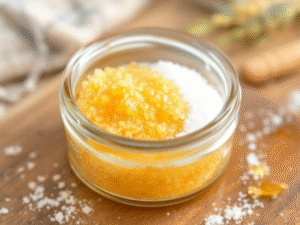
- Conversely, honey has calming and hydrating properties. Honey keeps the skin from drying out, while lemon helps with washing and oil control.
- It draws moisture into the skin and keeps it supple by acting as a natural humectant. Its antimicrobial and anti-inflammatory qualities also assist to soothe redness or irritation and lessen acne outbreaks.
- Lemon and honey work together to make a well-balanced scrub that leaves the skin feeling refreshed, less greasy, and radiant.
- Lemon juice should always be used carefully from a dermatological perspective because to its acidity; nevertheless, its harshness is lessened when combined with honey.
- When applied sparingly, honey’s preventive properties help preserve the skin barrier, guaranteeing the scrub’s continued safety and efficacy.
- How to Make the Scrub
- This scrub takes less than a minute to make and only needs two basic ingredients:
- Measure, honey. One tablespoon of organic, raw honey. Steer clear of processed honey since it can have chemicals or extra sugars.
- Pour in Lemon Juice: Add a few drops of freshly squeezed lemon juice to the honey. To avoid irritation, start with three to four drops and add more or less as necessary.
- Mix Well: Stir until the honey and lemon juice are evenly combined. The mixture ought to be sticky and smooth.
- Application: For one to two minutes, gently massage the scrub into clean, wet skin in circular motions. Pay attention to greasy areas like the chin, nose, and forehead.
- Rinse and Dry: Rinse with cool or lukewarm water after letting the scrub sit for an additional minute to allow the lemon and honey to do their work. Use a gentle towel to pat dry.
- For oily skin, this scrub should only be used once or twice a week. Avoid using too much lemon as this might lead to irritation or dryness.
- Benefits You Can Expect
- Oil Control: Lemon reduces shine by removing extra oil.
- Brightening Effect: Vitamin C lightens pigmentation and dark spots.
- Hydration Balance: Honey keeps the skin supple and avoids drying out.
- Prevention of Acne: Honey’s antimicrobial properties lessen outbreaks.
- Even Skin Tone: Consistent application improves smoothness and brightness.
- Trust & Safety Tips
- Lemon works, but it needs to be used carefully. Never apply it directly to the skin; always dilute it with honey.
- To check for sensitivity, perform a patch test prior to utilizing the scrub.
- Lemon can irritate skin and increase photosensitivity, so avoid the sun right after use. Use this scrub at night or when you won’t be going outside in the sun for optimal effects.
- If you want the most antibacterial and moisturizing properties, make sure the honey is raw and pure.
Tips for Safe Exfoliation
- Why Safety Matters in Exfoliation
- An effective skincare technique that can turn lifeless, dreary skin into a radiant, healthy complexion is exfoliation. But going overboard or employing the incorrect method can backfire.
- The skin barrier may be weakened by harsh scrubbing, repeated exfoliation, or inappropriate substances, which could result in redness, irritation, or even breakouts.
- It’s crucial to adhere to safe procedures if you want to gain from exfoliating without damaging your skin. Your skin will remain protected, nourished, and smooth if you follow these easy yet powerful guidelines.
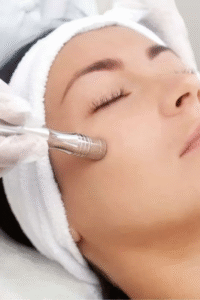
- Limit Scrubbing to 2–3 Times per Week
- Excessive exfoliation is one of the most frequent blunders people make. Daily scrubbing depletes the skin of its natural oils, decreasing the skin’s protective layer even if it may feel rejuvenating.
- Dryness, sensitivity, or increased oil production may result from this. Depending on your skin type, dermatologists advise avoiding exfoliation more than twice or three times a week.
- Dry or sensitive skin should only tolerate once or twice, but oily skin can endure up to three times. Keep in mind that regular, mild exfoliation will have long-lasting effects; consistency is more important than frequency.
- Always Use Gentle Circular Motions
- Just as crucial as the scrub itself is the method you employ. Microtears in the skin can result from excessive pressure or forceful back-and-forth motions. Instead, gently massage the scrub in circular motions with your fingertips.
- This technique gives your skin a natural glow by promoting blood circulation and ensuring even exfoliation. Because the skin around the eyes is thinner and more vulnerable to harm, avoid cleaning there.
- Follow Up with a Moisturizer to Lock in Hydration
- Your skin is more responsive to products after exfoliation since the pores are unclogged and the surface is clean. It might, however, also feel a little sensitive or dry. Always use a moisturizing moisturizer thereafter to regain equilibrium.
- Aloe vera, hyaluronic acid, and natural oils (like jojoba or almond) are some ingredients that help moisturize and calm the skin. This step guarantees that you get the most out of exfoliation by strengthening the skin barrier and preventing dryness.
- Do a Patch Test Before Using Lemon on Sensitive Skin
- Lemon is frequently used in natural scrubs due to its oil-controlling and whitening qualities. Lemon is very acidic and can irritate sensitive skin, despite its effectiveness.
- Apply a tiny bit of the scrub on your inner arm or behind your ear as a patch test before using it on your face.
- To check for redness, itching, or irritation, wait a full day. If your skin reacts, use softer ingredients like yogurt or oatmeal instead of scrubs with lemon.
- Additionally, since lemon scrubs can make you more photosensitive, avoid the sun just after using them.
- Building Trust Through Safe Practices
- By following these tips, you can enjoy exfoliation without worrying about side effects.
- Safe practices show that natural skincare is not only effective but also gentle when done correctly.
- Always listen to your skin—if it feels irritated, give it time to heal before resuming exfoliation.
- Trust comes from consistency, gentleness, and choosing ingredients that suit your unique skin type.
